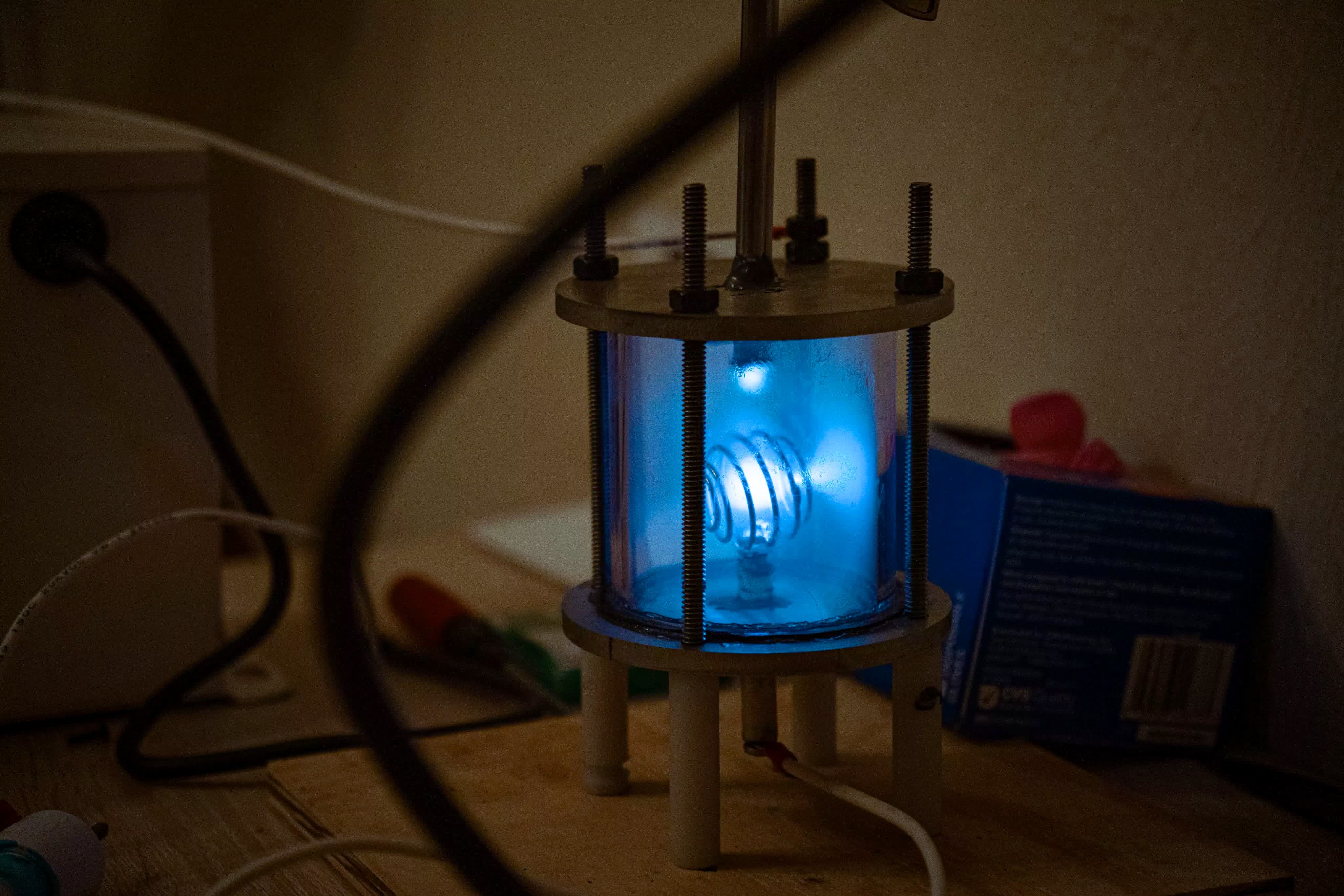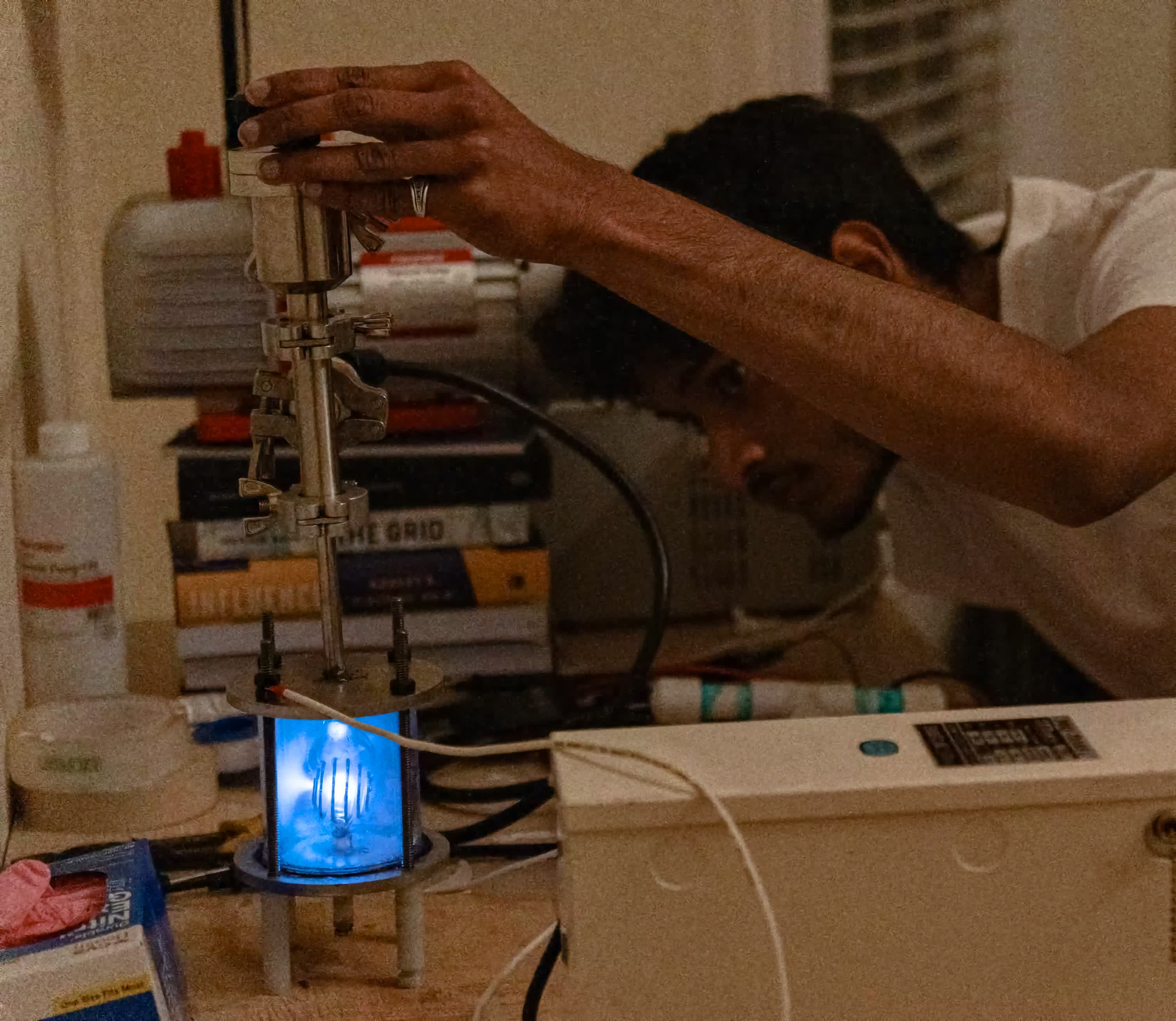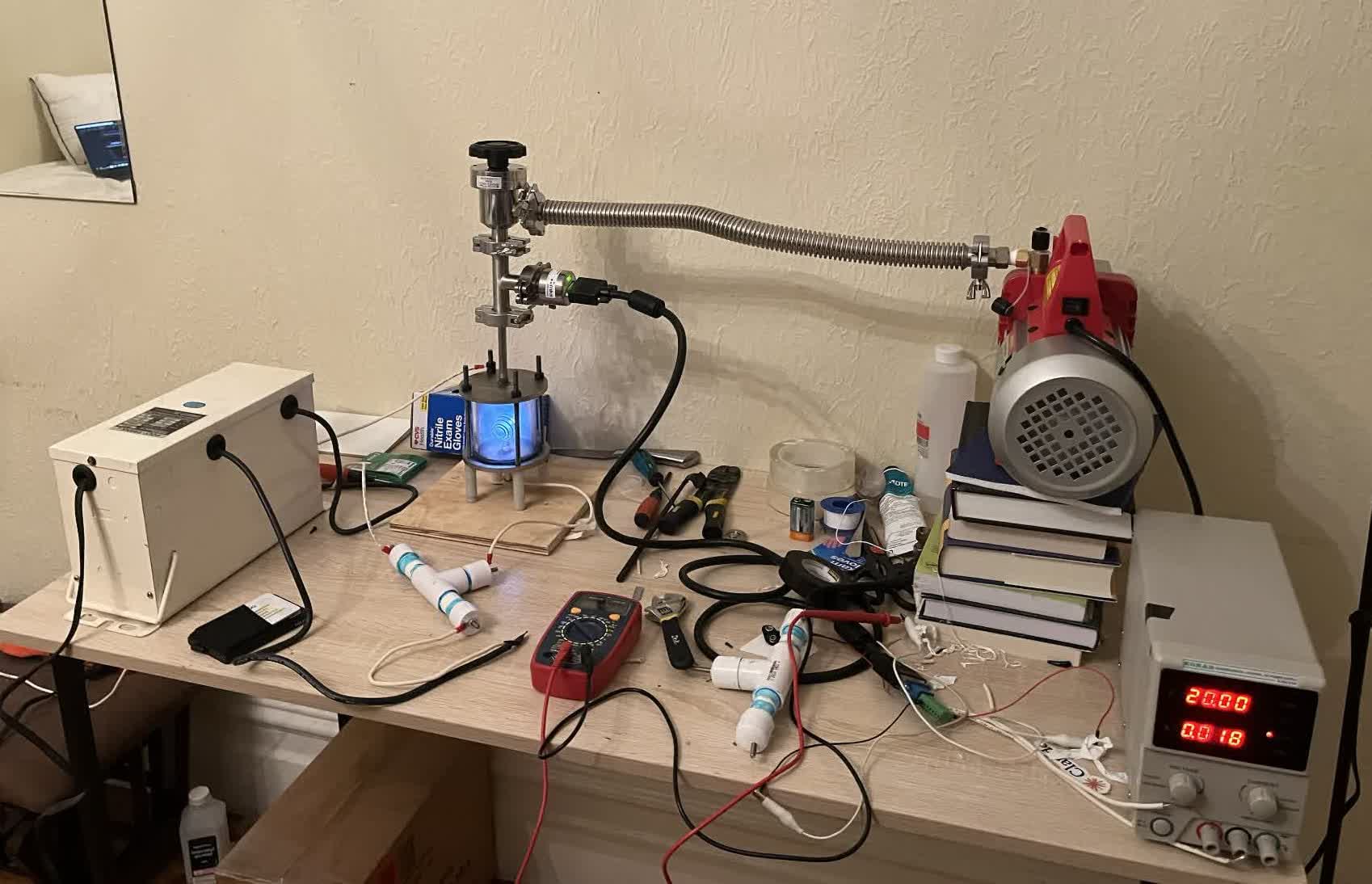In a nutshell: An unlikely contestant has emerged in the race toward cracking the fusion code, which has seen the biggest labs and richest billionaires pouring billions into various projects: a university student who assembled a reactor right in his bedroom in just four weeks. He did this by spending around $2,000 on some off-the-shelf parts he ordered online.

Hudhayfa Nazoordeen, a math major at the University of Waterloo, created a mini fusor that resembles an actual tokamak and hooked it up to a humble 12kV neon sign transformer for power. The result was a setup that could successfully produce plasma, which is where the fusion magic happens.
With "zero hardware experience," he spent week one just sourcing and figuring out all the components needed from suppliers like McMaster-Carr. Week two involved the nuts and bolts of assembling the main chamber and rectifier circuit. By week three, he had the whole thing set up in his bedroom and began tinkering away to get that neon transformer integrated.

However, it was cracking the vacuum system in "week 3.5" that seemed to really put Nazoordeen's perseverance to the test.
"This was by far the most annoying part of this project," he admitted in a thread on X/Twitter describing the project. He had to hunt down and seal multiple tiny leaks to ultimately achieve a vacuum of 25 millionths of an atmosphere.
Achieving a vacuum environment is important because fusion requires ridiculously low pressure to let the nuclei get close enough to fuse. Nazoordeen opted for an MKS-901p transducer to monitor and control the vacuum continuously.
in a couple weeks, I built a nuclear fusor in my bedroom – with zero hardware experience
– HudZah â (@hud_zah) August 23, 2024
the secret? Claude sonnet 3.5 + projects
a glimpse into the process below pic.twitter.com/H4261f5bCy
Besides the help he received from other engineers on campus, Nazoordeen also gushed about Anthropic's Claude 3.5 AI chatbot, which also played a major role in the development of the reactor.
"I fed Claude all my datasheets, and it helped a ton with this," he said.
Of course, this homemade fusor didn't quite make it to inducing fusion this time, so it doesn't technically emit neutrons. Achieving that is extremely challenging in a small design like this. It would most likely require significant further engineering and potentially moving to more advanced reactor concepts.
However, Nazoordeen seems to have more planned for this little project and says he's waiting for funding for the "full fusor."
Nazoordeen's work builds on earlier exploits of Olivia Li, an engineer from the University of Toronto, who last year constructed her own fusion reactor in a New York City apartment using deuterium gas extracted from heavy water. Li praised Nazoordeen's achievements.
"A lot of people I've talked to have been excited about building a fusion reactor. Hudzah is the only person to have actually went on and executed!" she wrote on X. She also shared a link to a write-up that she says would help anybody else wanting to make their own fusor at home.
Image credit: Hudhayfa Nazoordeen
Math student builds fusion reactor at home with help from Claude AI and $2,000

